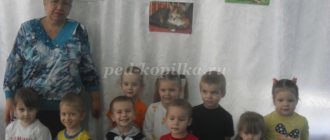These naughty whistling...
As I already wrote in a previous article about sound pronunciation, before you start playing automation games, you need to start staging the sound. Until the baby learns to pronounce S, Z, C in isolation, that is, separately, further work makes no sense. It is important to make sure that the preschooler’s articulatory apparatus “works” correctly in the process of pronouncing sibilants.
There are several ways to set pronunciation: imitation (an adult clearly shows the child all the nuances of articulation and makes sure that the child repeats correctly), articulation exercises, mechanical formulation (the speech therapist literally uses his fingers or a spatula to form the correct position of the child’s tongue to pronounce certain sounds).
You need to start working on sibilants and [C] with the sound [S], then [Z], since in terms of the position of the organs of articulation it is similar to [S]. Then it’s the turn of [Ts], which in terms of pronunciation is close to its two whistling “brothers”. In kindergarten, a speech therapist is involved in the production of sound pronunciation, but parents can help him by training the baby’s articulation apparatus with the help of special gymnastics (exercises “Slide”, “Football”, “Smile-pipe”, etc.).
After correct production and firm isolated pronunciation of whistling sounds, you can begin to automate them in syllables, words, and phrases. A child needs a game to learn something new easier, faster, and with interest. Speech therapy classes themselves cannot be called exciting; they are hard work, but it is imperative to structure the process in such a way as not to cause the child to protest against monotonous repetitions.
Let's master the sounds while playing!
To develop a preschooler’s phonemic awareness, teach sound analysis and, of course, automate and differentiate sounds, speech therapists advise and use didactic games themselves. I selected games suitable for children 5-6 years old, since at this age they work especially hard on correct sound pronunciation and getting rid of diction defects.
Attributes are usually the simplest in such games, the most common are in pictures:
- “Treat Zoya with sweets” - you need an illustration with a picture of a girl (or anyone: a boy, a cat, a fish), cut out blanks in the form of candies from cardboard. On one side of the “candy” we paste an image of an object whose name begins with the sound that needs to be automated, for example [C]. Background: Zoya loves sweets very much. Let's treat her!
The child must choose those “candies” that depict an object starting with the letter C. If he pronounces the word correctly, he can treat Zoya, but no, the adult takes the candy.
- “A Hedgehog is Dreaming” is a drawing with a sleeping hedgehog, and what he is dreaming of is depicted on clouds cut out of cardboard. An adult sets a task: the hedgehog is sleeping and he dreams of objects, all starting with the letter [Z]. Find his dreams!
- “It’s Carlson’s Birthday” – an illustration with Carlson, blanks in the form of wrapped gifts, on the back of the gift there is an image of objects. You need to choose as a gift those whose names begin with a whistling sound. In principle, the background and pictures can be about anything. But it is important that during the lesson there are playful, surprising, visual moments.
- “Sounds in Houses” is a modular game based on cut out or drawn houses. A sound diagram is added to the house, where the position of the syllable with the sound being studied in the word is indicated. We also need pictures with objects whose names correspond to sound patterns and those that do not. It is clear that the task is to “place” the necessary pictures in the house.
How to differentiate difficult sounds?
Games for distinguishing sounds come down to ensuring that the preschooler understands the difference in the pronunciation of similar sounds and learns not to confuse them. This stage of work is carried out after the child has automated sounds, for example, whistling and hissing. And then we will compare them, since most often children confuse S-Sh, C-H, etc.
The simplest thing you can offer your child is to practice attention. We read the poem:
The gopher's song is whistling,
The snake has a hiss.
Listen and find out
Guess these songs.
Now the pictures depict a gopher separately, and a snake separately. We show one gopher and then a snake in turn. The child should pronounce the sound [S] for a long time on a gopher, and [Ш] on a snake. Using the same principle, we differentiate other similar sounds. Confusion verses help well to understand the differences in sounds:
The cat catches the mouse in full view of the children,
Mom washes the bear, painters paint the rat,
The fireman wears a helmet, Sasha ate a helmet,
They gave the candy to MaSka.
I think that's enough on this topic for now. If you have any questions, I will be happy to help you figure it out. And now the traditional request: share the material on social networks, and also subscribe to the news.
Sincerely, Tatyana Sukhikh! Till tomorrow!





